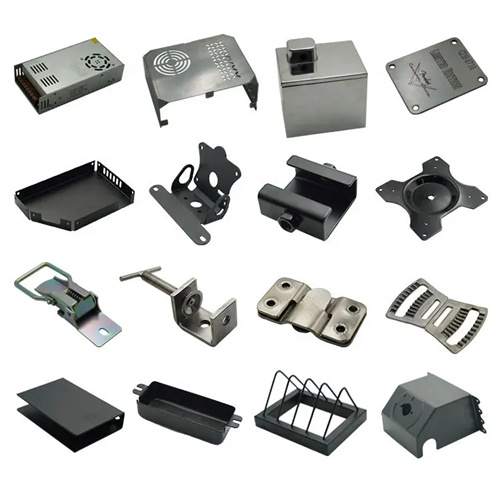Bending process and deformation characteristics of bending die
The bending process in a bending die is a gradual plastic deformation process in which the material transitions from a flat state to a curved state. This process can be divided into three stages: elastic bending, elastoplastic bending, and plastic bending. The material deformation characteristics and stress distribution vary significantly in each stage. Understanding the bending process and its deformation characteristics is crucial for optimizing die design and controlling the quality of bent parts. Material deformation during the bending process primarily manifests as changes in curvature, thickness, length, and springback, which directly impact the dimensional accuracy and mechanical properties of the bent part.

The elastic bending stage is the initial stage of the bending process. When the punch contacts the blank and applies external force, the material deforms only elastically, with the outer fibers in tension and the inner fibers in compression, leaving a neutral layer located in the middle of the material thickness. At this point, if the external force is removed, the material returns to its original shape, with no permanent change in the bend angle or radius of curvature. The deformation during the elastic bending stage is small, the bend radius is large, and the stress does not exceed the material’s yield limit. For example, a low-carbon steel plate will only bend slightly when the bending force is low, and will fully rebound when the external force is removed. The deformation during this stage is characterized by reversibility, and the force distribution during this stage must be considered during mold design to avoid equipment impact.

The elastic-plastic bending stage is a phase in which both elastic and plastic deformation coexist. As the bending force increases, the outer fibers of the material first reach their yield limit and begin to deform plastically, while the inner fibers remain in a state of elastic deformation. At this point, the neutral layer begins to shift inward, the bending radius gradually decreases, the bending angle increases, and the plastic deformation zone of the material expands from the outer layers to the inner layers. The deformation characteristic of the elastic-plastic bending stage is that some deformation is irreversible. Although some rebound occurs after the external force is removed, the basic shape of the bent part is already formed. For example, when the bending force reaches a certain value, the outer fibers of a mild steel V-bend undergo plastic deformation, while the inner fibers still recover elastically. The bending angle is 80° (90° for a mold angle). After the external force is removed, the fibers rebound to 85°, resulting in permanent deformation.

The plastic bending stage is where the material primarily undergoes plastic deformation. As the bending force continues to increase, the plastic deformation zone expands to the entire material thickness, the inner fibers reach their yield limit, and the material enters a fully plastic state. At this point, the neutral layer offset reaches its maximum, the bending radius stabilizes, the bending angle approaches the mold angle, and only a small amount of springback occurs after the external force is removed. Deformation during the plastic bending stage is characterized by irreversible deformation, stable shape, and high dimensional accuracy. For example, during the correction bending process, by applying a large correction force (typically 3-5 times the free bending force), the material undergoes complete plastic deformation. The bending angle of a V-shaped part can reach 90°±0.5°, with springback controlled to within 1°, meeting high precision requirements.

Deformation characteristics during the bending process also include changes in material thickness, length, and surface quality. The outer layer of the material is subjected to tension, resulting in a slight decrease in thickness; the inner layer is subjected to compression, resulting in a slight increase in thickness. The overall thickness change is approximately 1%-3%, which is more pronounced for thick materials (t>5mm). Material length changes manifest as elongation of the outer layer and shortening of the inner layer, while the length of the neutral layer remains essentially unchanged. This serves as the basis for calculating the unfolded length of the blank. Regarding surface quality changes, if the bending radius is too small or the mold surface is rough, the outer layer of the material may be scratched or cracked. This is especially true for brittle materials such as high-strength steel. Defects must be avoided by optimizing the mold corner radius and surface roughness (Ra ≤ 0.8μm).

Deformation uniformity during the bending process is crucial to the quality of bent parts. Uneven deformation can cause twisting, warping, or localized thinning in the bent part. Factors affecting deformation uniformity include die clearance, pressing force, material properties, and blank size. Uneven die clearance can lead to inconsistent deformation on both sides, resulting in lateral bending; insufficient pressing force can cause material slippage and uneven deformation; and material anisotropy (such as greater plasticity when the rolling direction is perpendicular to the bending direction) can lead to differences in deformation in different directions. For example, an aluminum alloy bent part had a 1° lateral bend after bending due to a die clearance of 0.2mm on the left and 0.3mm on the right. After adjusting the clearance to a uniform 0.25mm, the lateral bend was eliminated. By controlling these factors, deformation uniformity can be improved and the quality of the bent part can be guaranteed to be stable.
